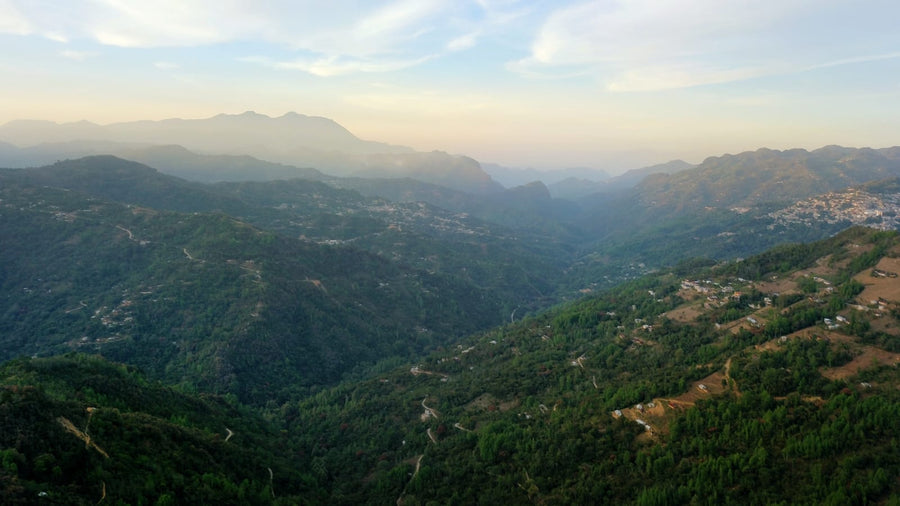




Mexico: Tejao
Tejao
-
Rich cream and ripe apricot define this beautifully textured coffee, with a flash of orange brightness keeping things lively through to the finish.
The Sierra de Flores Magón region is one of eight making up the State of Oaxaca, Mexico. Its rugged terrain and considerable settlement of diverse cultural groups make it a vibrant region of contrasts, boasting several varied microclimates resulting in lush flora and fauna. This small area is crossed by the Santo Domingo and El Grande rivers, creating deep canyons amidst towering mountain peaks such as the Cerro Cheve, 2,700 meters above sea level. The low-lying canyons are semi-arid, home to a rich variety of cacti, while on the opposite side, the humid high elevations are populated by pine forests. Previously known as "Cañada" (if you’ve been around for a while, this is the name you’ll have known this coffee under when we’ve bought it in previous harvests!), in November 2022 the Congress of the State of Oaxaca decided to rename it "Sierra de Flores Magón" in honor of the anarchist journalist Ricardo Flores Magón, a native of the region.
The majestic Mazateca mountain range, reaching up to 2000 masl, runs through the north of the region. It’s named for the indigenous Mazateco people and Tejao translates to “eagle’s nest” in their native language. This is the original name for the town of Huatla de Jimenez, famous for its coffee, where this lot was grown. The Mazateco people’s ancestral production techniques are free of chemicals and the coffee in this region is grown in agroforestry amongst other crops and native trees.
Traditionally, despite coffee being the main agricultural product of the region, coffee yields have been low and crops have often been sold to the commodity market, however recent investment in the area from projects like Ensambles (our importing partners) sees an increased focus on specialty coffee. Ensambles have set up a regional operation in la Mazateca to be able to buy parchment directly from nearby smallholders, while providing direct feedback and technical assistance to local farmers in the field.
Coffee produced in this region is traditionally fully washed and mainly organic, although not certified as such, and the majority of farms feature shade-grown coffee. There is a culture of minimal intervention in this area too, meaning producers tend to refrain from pruning the Typica plants, often resulting in 2-3 metre high coffee trees, as old as 40 years in some cases! Typica is a varietal that often suffers from Coffee Leaf Rust, however, due to the altitude of this region, the coffee crops have not suffered from this.
The lower temperatures (particularly overnight) and high level of humidity in the atmosphere in this region makes drying coffee a tricky endeavour. This means that many producers often have to move coffee from outdoor drying patios inside overnight. As a result of this, coffee is often dried to a lower humidity than is usually seen in the surrounding areas: around 11% humidity, compared with the typical 12-13% to ensure longevity.
However, these lower temperatures aren't all bad and, when managed effectively, can lead to great things. The colder climate and later harvest than other coffee-growing parts of Mexico means the coffee cherries have a longer, slower maturation period, often resulting in a sweeter, complex cup. We think this coffee showcases this beautifully!
-
- Country: Mexico
- Region: La Cañada
- State: Oaxaca
- Town: Tejao
- Producers: Ensambles
- Processing method: Washed
- Altitude: 1,500-1,900 m.a.s.l.
- Varietal: Typica & Bourbon
-
Tasting notes: Apricot, cream, orange.
Cup of Excellence Cupping Scores
- Clean Cup: (1-8): 6
- Sweetness: (1-8): 6.5
- Acidity: (1-8): 6.5
- Mouthfeel: (1-8): 7.5
- Flavour: (1-8): 7
- Aftertaste: (1-8): 6
- Balance: (1-8): 6.5
- Overall: (1-8): 6.5
- Correction: (+36): +36
- Total (Max 100): 88.5
-
Medium: through first crack and let this develop in the gap a little, but don't let second get going - the creaminess and fruit suits this, whist a darker roast would move this into a more chocolatey flavour profile.
-
-
Producer Stories
Learn more about coffee sourcingTejao
The colder climate and later harvest in Oaxaca than other coffee-growing parts of Mexico means the coffee cherries have a longer, slower maturation period, often resulting in a sweeter, more complex cup.
Read more
